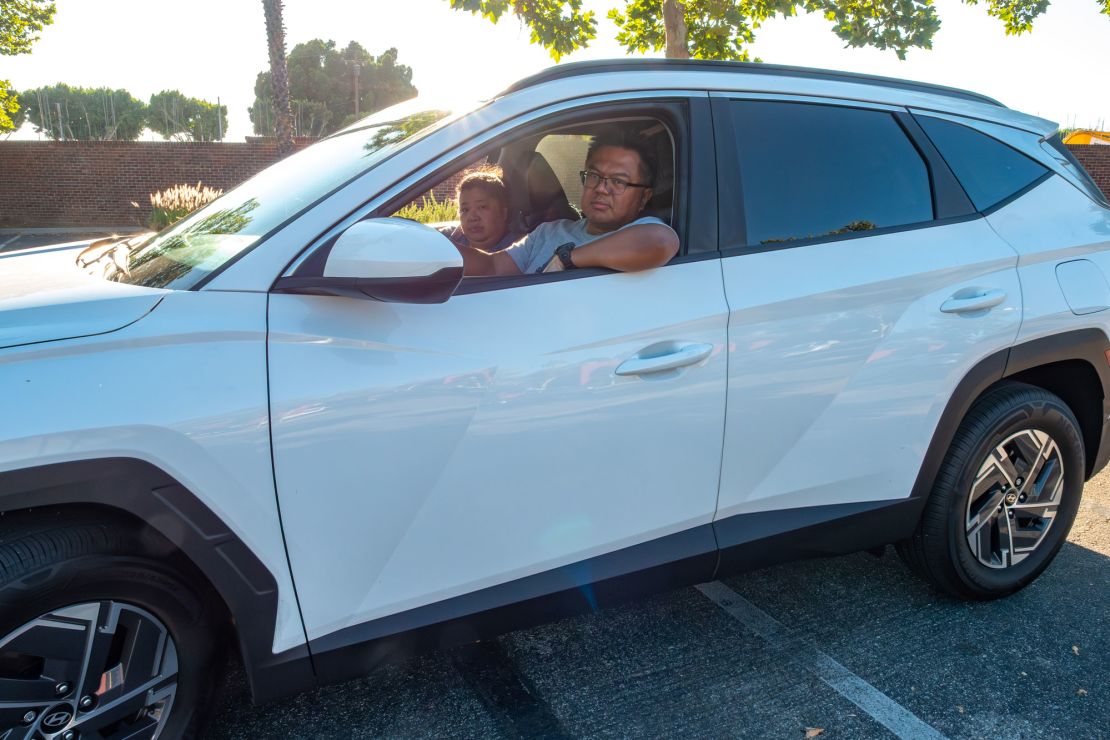Washington
CNN
—
Linda Wilburn, a 62-year-old retiree in Susanville, California, did not plan to buy a car this year.
She originally wanted to save up, build her credit and buy a used car next year — a necessary purchase, she said. But President Donald Trump’s tumultuous trade war drove her to buy a car this past April, fearing higher prices if she waited any longer.
Now Wilburn has a $607 monthly car payment coming out of her $1,600 Social Security check, which she said is her only source of income.
“Things are so tight right now,” Wilburn told CNN. “But the car was a necessity because of my oldest son’s medical appointments.”

As Trump waged a global trade war this past spring, many Americans raced to make major purchases — cars, electronics and furniture — trying to beat any potential price hikes caused by tariffs. That spending spree has left many with new debt and could weigh on consumer spending, which powers the US economy, in the months ahead.
Retail sales surged in March as consumers drove up car sales, spurred on by tariffs targeting imported cars and auto parts, which went into effect in April and May, respectively. But those numbers have weakened since then, according to Commerce Department data, declining 0.9% in May in the steepest monthly decline in two years.
Meanwhile, US household debt reached $18.2 trillion in the first three months of the year, a record high on data going back to 2004, as delinquencies marched higher, according to data from the Federal Reserve Bank of New York.
For families like Wilburn’s, the spring’s spending spree was a gamble against uncertainty —a bet that may now require years of careful budgeting to manage.
“Once I get everything level again, hopefully it will get easier, but I don’t know,” Wilburn said. “Now we can’t really do anything for our enjoyment, like buy bird food for all the birds in the backyard.”
Americans who are now saddled with new debt may pull back on their purchases. Economists say “discretionary spending” — purchases that are not necessary for one’s survival — is usually first on the chopping block. That includes eating out and traveling for leisure.
A Bankrate survey of consumers’ plans for discretionary spending showed that 54% of US adults said they expect to spend less on travel, dining out or entertainment this year, up from 49% who said the same last year. In May, retail spending at restaurants and bars fell 0.9%, the Commerce Department said, the first monthly decline since February and the steepest one since February 2023.

Annika Wheelock, 28, and her family used a loan and a home equity line of credit to accelerate spending on more than $137,000 in purchases — including a new car, computers, a refrigerator and home repairs – to avoid any sticker shock from Trump’s tariffs. With her husband returning to school this fall and their retirement contributions slashed, Wheelock, who works as a nurse, says her family is now living paycheck to paycheck.
“After making all these purchases, we’re hunkering down and not planning on spending that much money, like we’re not planning on going out and putting money back into the economy anytime soon,” she said.
In March, a CreditKarma survey of more than 2,000 US adults showed that 51% of them said they changed their spending behavior in anticipation of Trump’s tariffs, with 18% specifically saying the pulled forward major purchases.
Trump’s tariffs are widely expected to eventually weigh on Americans through higher inflation, even those who front-loaded their big-ticket purchases. That means consumers who took part in the spring spending spree are left even more financially vulnerable.
Henry Tuason, a 52-year-old school photographer from Los Angeles, said he spent nearly $50,000 earlier this year on a new laptop, television and a $45,000 Hyundai Tucson Hybrid to get ahead of the tariffs’ impact. He said he’s been on edge these days, worried his family could suddenly deal with an unexpected hardship.

“One day, when I went to go pick (my wife) up from work, people were driving very badly and I told her how picking her up is stressing me out because of this brand new car,” he said. “She’s gone back to taking the bus because to crash it prematurely would be very bad.”
And it’s not just being prepared for emergencies. If more Americans find themselves without a job or dealing with any financial hardship, that would further trigger a pullback in spending.
“Anytime you lose a job is bad, but it’d be much worse if me or my wife did nowadays, after everything we bought,” Tuason said.
The unemployment rate remains at a low 4.2% for the third consecutive month in a row and employers are still demonstrating an appetite to hire. On Tuesday, the Labor Department reported that job openings unexpectedly rose in May to 7.7 million. However, entry-level hiring is down and Trump’s chaotic trade war paralyzed some business decision-making.
For now, Wall Street and economic policymakers are watching closely whether spending plummets after households stretched themselves to beat Trump’s tariffs.
“As the tariffs kick in with price increases finally taking effect, that will be a hit to people’s real income, their purchasing power, and because of that, you will see a slowing in consumer spending,” Jay Bryson, Wells Fargo’s chief economist, told CNN. “And that will also be because of that pull-forward in spending.”

